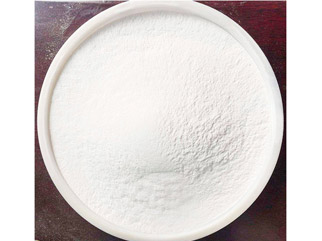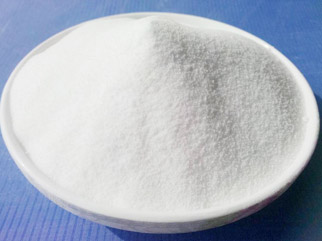Cuprous Iodide, white or brownish-white cubic crystal or dense powder, easily
decomposed into brownish yellow when exposed to light. It is insoluble in water
and ethanol, soluble in concentrated sulfuric acid and hydrochloric acid, and
also soluble in liquid ammonia, potassium iodide and potassium cyanide
solutions. With sodium hydroxide to produce cuprous oxide, sodium iodide and
water.
Cuprous Iodide
Used as organic reaction catalyst, anode ray tube cover, animal feed additives, etc. Density 5.63g / mL, melting point 605 ℃, boiling point 1336 ℃. It exists in the form of copper iodide in nature.
Similar to other cuprous halides (except unstable cuprous fluoride), the crystals of cuprous iodide have zinc blende structure (ɣ-CuI) at room temperature, and both ions are tetrahedral coordination. When heated to 390 ° C, it transforms to wurtzite structure (β-CuI). If the temperature is higher than 440 ° C, it exists in a cubic structure (α-CuI). Because the copper-halogen bond bond length (2.338å) in cuprous iodide is greater than that of the other two cuprous halides, the two transition temperatures of cuprous iodide are higher than those of cuprous chloride and cuprous bromide All are low. At high temperatures, a considerable number of cyclic trimers (Cu3X3) are present in the three cuprous halide vapors, and there are also tetramers of cuprous halide.
The main purpose
It can be used as organic synthesis catalyst, resin modifier, artificial rainfall agent, anode ray tube cover, and iodine source in iodized salt. In the presence of 1,2- or 1,3-diamine ligands, cuprous iodide can catalyze the conversion of brominated aromatic hydrocarbons, brominated heterocyclic compounds and vinyl bromide to the corresponding iodides. The reaction is generally carried out in a dioxane solvent, using sodium iodide as the iodination reagent.
Aromatic iodides are generally more active than corresponding chlorides and iodides. Therefore, cuprous iodide can catalyze a series of coupling reactions involving halogenated hydrocarbons, such as Heck reaction, Stille reaction, Suzuki reaction and Ullmann reaction. 2-bromo-1-octene-3-ol and 1-nonyne undergo coupling reaction in the presence of dichlorobis (triphenylphosphine) palladium (II), cuprous chloride and diethylamine 7 -Methylene-8-hexadecyl-6-ol.
We are Pharmaceutical Intermediates Supplier, please contact us.

